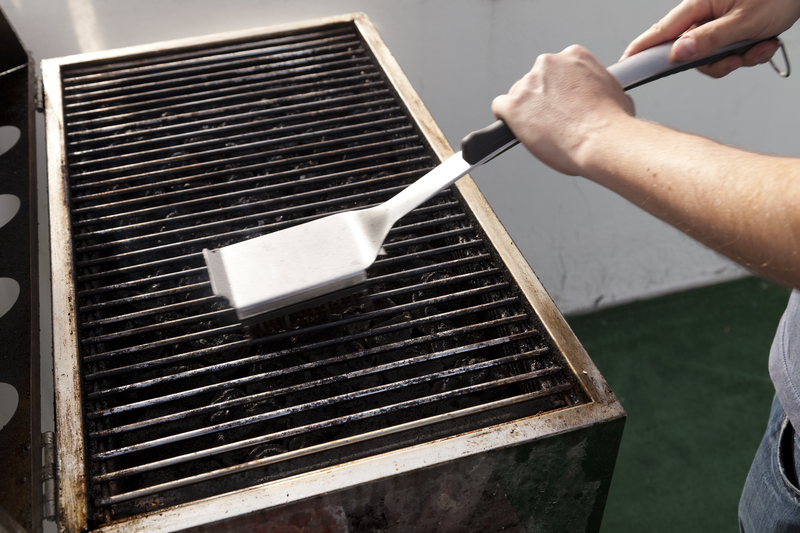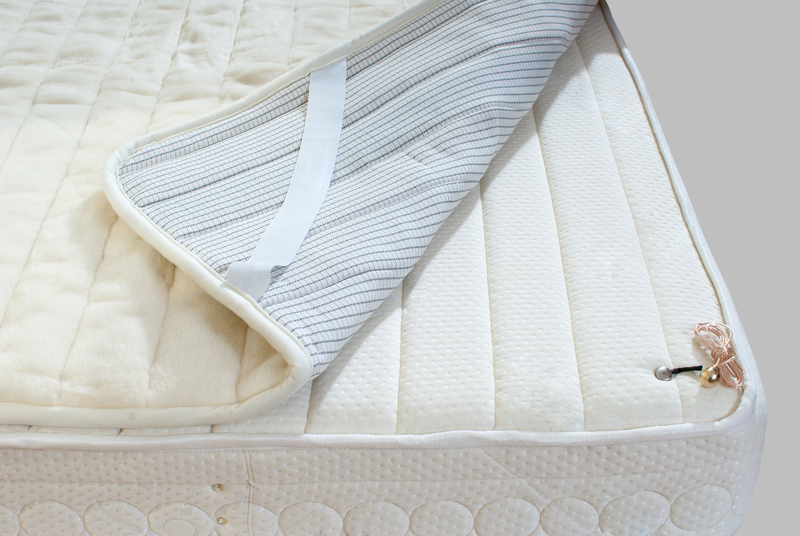Conquer the Kitchen: A Simple Guide to a Grease-Free Enamel Tray
Posted on 25/08/2025
Conquer the Kitchen: A Simple Guide to a Grease-Free Enamel Tray
Enamel trays are a beloved staple in kitchens all over the world. Their durability, glossy appearance, and even cooking make them cherished tools for both amateur and professional chefs. However, one challenge that plagues many is stubborn grease build-up. Learning to keep your enamel tray immaculate not only enhances its longevity but ensures your food tastes delicious, batch after batch. In this comprehensive guide, we'll show you how to conquer kitchen grease and maintain a spotless enamel tray with easy, practical steps.
Why Choose Enamel Trays?
Before we delve into the best methods for cleaning enamel trays, it's important to understand why enamel is such a popular choice in kitchens. Enamelware is made by fusing powdered glass onto metal, creating a hard, non-porous, and smooth surface that resists stains and corrosion. Here's why enamel trays are so widely used:
- Non-reactive surface: Enamel doesn't react with acidic or alkaline foods, making it ideal for a variety of recipes.
- Even heat distribution: The metal core (often steel or cast iron) ensures your food cooks evenly.
- Visually appealing: With their vibrant colors and glossy finish, enamel trays can go straight from oven to table.
- Durable and long-lasting: Properly cared for, an enamel tray can last generations.
Despite these advantages, grease and food residue can stubbornly cling to enamel surfaces. Let's explore how to deal with this issue effectively and maintain a grease-free enamel tray.

Understanding the Challenges: What Makes Grease Stubborn on Enamel Trays?
Enamel is remarkably resilient, but greasy residue can still build up over time, especially after high-heat roasting or baking. The main culprits include:
- Fats and oils: When exposed to heat, these can polymerize, forming tough, sticky layers on enamel.
- Burnt sugars or sauces: Caramelized food particles can leave behind hard-to-remove stains.
- Lack of prompt cleaning: Allowing trays to sit unwashed gives grease time to harden.
Addressing this early on with the right cleaning techniques will help you avoid frustration and potential damage to your beloved cookware.
Prevention is Key: How to Keep Your Enamel Tray Grease-Free
Proactive Steps Before Cooking
- Use parchment paper or silicone mats: Lining your tray minimizes direct food contact, reducing grease buildup.
- Apply a light coat of oil: A thin, even layer can help keep foods from sticking and make cleaning easier, but don't overdo it.
- Avoid high-sugar marinades: These tend to burn and leave residue. Consider lower-sugar alternatives for easier cleanup.
Simple, preventative measures can halve your cleaning time and leave your enamel tray sparkling after every use.
Step-by-Step: How to Clean a Greasy Enamel Tray
Even with the best intentions, sometimes grease just happens. Here's your simple guide to a grease-free enamel tray:
1. Let the Tray Cool
Never submerge a hot enamel tray in cold water. The sudden temperature change can cause cracking or warping. Wait until the tray is warm, but not hot, before cleaning.
2. Soak in Warm, Soapy Water
Fill your sink or tub with warm water and a few drops of mild dish soap. Place the tray in the water and allow it to soak for 10-20 minutes. This loosens baked-on grease and food particles.
3. Gentle Scrubbing
- Choose the right tool: Always use a soft sponge or non-abrasive brush. Avoid steel wool or harsh scouring pads; these can scratch the enamel surface.
- Work in circles: Focus on greasy spots and corners where residue accumulates.
4. Baking Soda Boost
Still dealing with greasy patches? Baking soda is your secret weapon.
- Sprinkle baking soda directly onto stubborn spots.
- Add a few drops of water to create a paste.
- Let it sit for 10-15 minutes, then gently scrub.
Baking soda's mild abrasiveness lifts grease without damaging your enamel tray's finish.
5. Rinse & Dry Thoroughly
- Rinse the tray with clean, warm water to remove all soap and residue.
- Let the tray air dry or use a soft towel to dry it completely before storing.
Tough Cases: How to Handle Burnt-on Grease and Stains
For especially tough, burnt-on grease, try the following methods--these are designed to restore your enamel tray's shine without harming its surface.
The Vinegar Solution
- Mix one part white vinegar with two parts hot water.
- Pour into the tray until the greasy residue is covered.
- Let soak for 30 minutes to one hour.
- Scrub gently and rinse thoroughly.
Vinegar breaks down grease naturally and helps neutralize lingering odours.
Lemon and Salt Scrub
- Cut a lemon in half and dip it in coarse salt.
- Rub the cut side over the greasy or stained areas.
- Let the mixture sit for 10-15 minutes before rinsing.
This eco-friendly method combines the power of citric acid and salt to lift stubborn grease.
Enamel-Safe Commercial Cleaners
- If natural methods aren't enough, seek cleaners specifically designed for enamel cookware. Read labels to ensure they're non-abrasive and safe.
- Follow the manufacturer's instructions precisely.
Always test a small area first to avoid discoloration or surface damage.
Common Mistakes to Avoid
When striving for a grease-free enamel tray, some common errors can turn your efforts into headaches. Beware of the following:
- Using abrasive tools: These can scratch and permanently damage enamel surfaces.
- Submerging hot enamel in cold water: This can cause warping or cracks due to thermal shock.
- Allowing grease to sit for long periods: The longer grease stays, the harder it becomes to remove.
- Using harsh chemicals: Bleach or overly caustic solutions may damage the coating and affect food safety.
Special Considerations: Caring for Colored or Vintage Enamel Trays
Not all enamel trays are created equal. Vintage or brightly colored enamelware needs a little extra love:
Preserve Color and Shine
- Avoid direct flame: Always use enamel trays in the oven rather than on stovetops unless specified as safe.
- Store with care: Stack trays with paper towels or soft cloths in between to prevent chipping.
- Skip the dishwasher: Hand washing is always best for old or decorative enamelware to preserve color and prevent dulling.
Beyond Clean: Tips to Extend the Life of Your Enamel Tray
Achieving a grease-free enamel baking tray isn't just about cleaning--it's about extending its useful lifespan and performance. Here's how:
- Handle with care: Dropping or banging the tray can chip the enamel, especially on edges and corners.
- Avoid drastic temperature changes: Let trays cool before washing with cold water to prevent cracks.
- Inspect regularly: If you see chips or cracks in the enamel, discontinue use for food to avoid contamination from the metal core.
Eco-Friendly Alternatives for a Grease-Free Enamel Tray
Nowadays, many households are turning to natural cleaning methods to avoid chemicals. Here's a quick list of environmentally responsible options that work brilliantly on enamel trays:
- Baking Soda and Vinegar: As described above, this combo safely tackles even tough stains.
- Lemon and Salt: Great for both cleaning and deodorizing enamelware.
- Cream of Tartar: Make a paste with water and scrub stubborn spots.
Choosing natural alternatives not only keeps your kitchen safer but is also gentle on the planet.

FAQs: Keeping Your Enamel Tray Grease-Free
Can I use a dishwasher for my enamel tray?
While many modern enamel trays are labeled dishwasher safe, hand washing preserves the lifespan and finish best. The dishwasher's high temperatures and harsh detergents can wear down colored finishes and cause chips.
Is it safe to use oven cleaners on enamel?
Oven cleaners are usually too harsh and can damage enamel. Instead, use dedicated enamelware cleaners or natural options like baking soda and vinegar.
What should I do if my enamel tray gets chipped?
If the chip is small and on the outside, you may continue to use the tray with caution, but if the inside is exposed, stop using it for food to prevent rust and food contamination.
Conclusion: Enjoy a Grease-Free Cooking Experience
With the right techniques and a little care, your enamel tray can serve you for years, grease-free and gleaming. Remember:
- Clean promptly after use to prevent stubborn grease build-up.
- Use gentle, non-abrasive cleaning tools and natural solutions.
- Take preventive measures like lining your tray or using silicone mats.
Conquering kitchen grease doesn't have to be difficult. With these simple steps and a bit of consistency, your enamel trays will stay looking and performing like new, making every meal a joy from prep to cleanup.
If you crave a spotless kitchen, start with your enamel tray and feel the difference!




